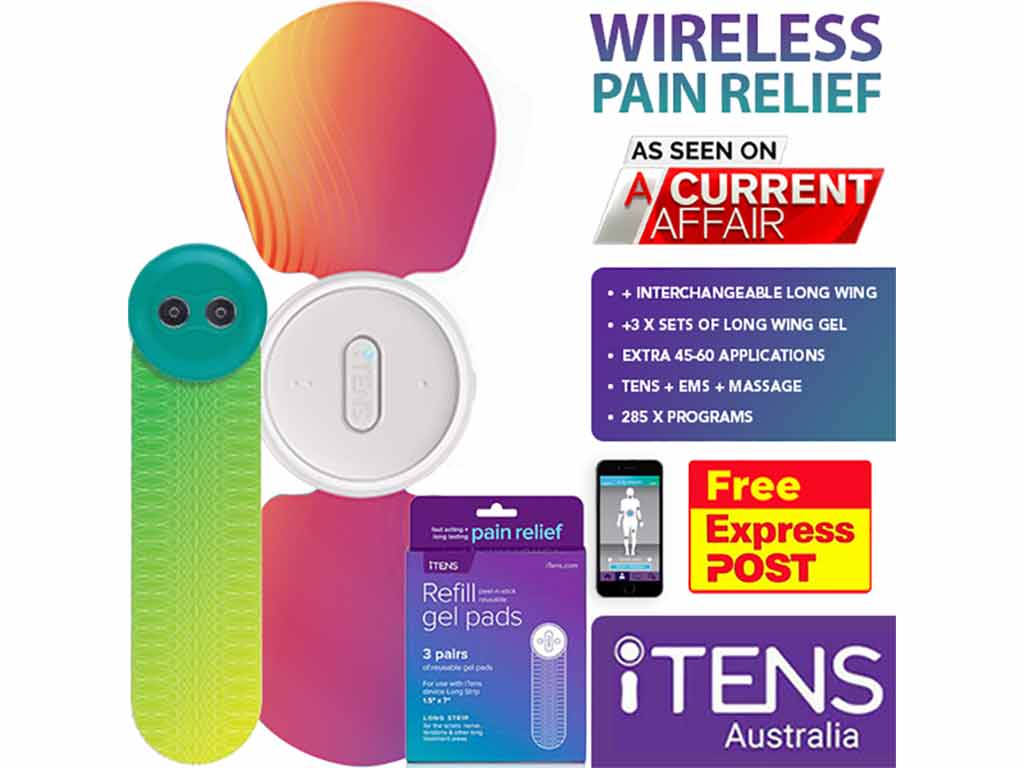
Shoulder pain is a problem that can make daily activities difficult. Injury, overuse, or underlying medical conditions typically cause it. The pain can range from mild to severe. One treatment option is Transcutaneous Electrical Nerve Stimulation (TENS). TENS for shoulder pain works by sending electrical impulses to the nerves near the pain site. For effective relief, place the pads on the muscles just above the shoulder joint. As a safety precaution, people can consult a doctor before use.
Traditional solutions to pain, like medications, are reliable. However, regular intake may cause adverse side effects. Thus, TENS therapy has emerged as a promising alternative for shoulder pain management. By understanding TENS, individuals can make an informed decision about whether it is right for them. The following sections will present how it works, proper pad placement, and safety precautions for easy navigation of the innovative treatment.
How a TENS for Shoulder Pain Works
TENS for shoulder pain can help relieve discomfort and improve quality of life. It uses low-voltage electrical currents to disrupt pain signals through the concept of pain gating. Also, it can activate endorphins, which are natural pain killers in the body. Individuals with acute and chronic pain in the shoulders can find relief from this therapy. Additionally, they can utilise it to manage other pain conditions.
Pain in the shoulders can cause neck pain and affect the upper back. Thus, patients can place the adhesive electrode pads in those areas. However, TENS can be most effective by attaching the pads to the shoulder blades. The machine sends gentle electrical stimulation to the affected muscles and nerves.
Additionally, this type of therapy is non-invasive. It does not require oral medication or painful injections. Furthermore, TENS machines come with adjustable settings. This allows patients to personalise the intensity and frequency of the electrical stimulation. Many people find that using a unit provides significant pain relief. As a result, they can resume their tasks and responsibilities with minimal discomfort.
How to Operate the Device
The following is the step-by-step procedure for operating a TENS device:
- Place the electrodes on the affected shoulder area. Make sure to position them correctly for optimal relief.
- Turn on the machine and adjust the settings accordingly. Most devices have adjustable intensity levels, frequency, and timer options.
- Begin with a low-intensity level. Gradually increase it until there is a tingling or pulsating sensation. The intensity should be strong but comfortable.
- Some units offer different modes, such as continuous, burst, or massage modes. Experiment with the various modes to find what works best.
- Turn off the device and carefully remove the pads from the shoulder.

Proper Pad Placement of TENS for Shoulder Pain
Proper pad placement is crucial when using TENS for shoulder pain relief. People should strategically position the electrodes on the affected area. This effectively targets the source of pain signals. By placing the pads correctly, they can ensure a successful session and a better quality of life.
To begin, identify the specific area in the shoulder where the most pain or discomfort is. This can be around the shoulder blades, in the upper arm bone, around the neck or the upper back. Afterwards, place the electrode pads directly on the skin. Make sure they are in contact with the soft tissues underneath. This allows the electrical currents to directly stimulate the muscles and nerves, providing relief from pain sensations.
The placement of electrodes for shoulder pain varies depending on the type of pain. For adhesive capsulitis or frozen shoulder, the pads should be closer to the joint. For a rotator cuff injury, the electrodes should be positioned around the muscles and tendons surrounding the joint. In addition, it is recommended to consult with a doctor or pain management professional to determine the best placement for specific conditions.
Therapy Duration
Specific conditions can determine the therapy duration for shoulder pain. In general, it is recommended to use electrical nerve stimulation for about 20 to 30 minutes per session. However, it is important to follow the guidance of your professionals regarding its frequency and length.
Medical practitioners can assess conditions and recommend the appropriate settings based on several factors. This includes the type and intensity of the pain, as well as the response of people to treatment. Keep in mind that consistency is key. Regular sessions may be necessary over weeks or months to achieve optimal pain relief.

Safety Precautions When Using TENS for Shoulder Pain
Using TENS for shoulder pain can be an effective form of treatment. However, it is important to take certain safety precautions. Firstly, avoid placing the electrodes directly over open wounds, irritated skin, or areas with a high amount of sensation. This will help minimise any potential discomfort or skin irritation. For further skin protection, choose hypoallergenic pads. This can be particularly helpful for people with high sensitivities.
Secondly, start with the lowest settings. Slowly increase them as tolerated. Otherwise, high intensities and frequencies can cause sudden shocks. Low intensities and frequencies allow the body to adjust to the therapy. Moreover, they help prevent muscle contractions or pain sensations from being too strong.
Lastly, do not use TENS therapy while sleeping or driving. It is important to be fully alert and aware of the response of the body to the treatment. If people experience any unusual or adverse symptoms during the session, such as increased pain, they should discontinue and consult with a healthcare provider.
When to See a Doctor
While mild shoulder pain can often be managed at home with rest and over-the-counter pain medications, there are certain situations where people should see a doctor. One instance is when the pain is severe, persistent, or worsening despite conservative measures. This may be indicative of a more serious underlying condition that requires medical intervention.
Additionally, it is essential to seek medical attention when there is difficulty moving the shoulder, weakness or numbness in the arm or hand, or if the pain is accompanied by swelling or deformity. Furthermore, recent experience of a shoulder injury or trauma may prompt medical advice.
Conclusion
TENS for shoulder pain is a non-invasive, 100% drug-free therapy. It utilises electrical pulses to relieve pain. Moreover, it affects the range of motion and blood circulation. Consequently, it reduces inflammation and tightness in muscles. The treatment method is becoming increasingly in demand among those who suffer from chronic pain or acute conditions such as arthritis, rotator cuff injuries, frozen shoulder, tendonitis, or any other type of shoulder injury.
While TENS therapy can be an effective treatment for shoulder pain, it is important to follow certain safety precautions. Consult with a medical expert, practice proper electrode pad placement, start with the lowest intensity setting, and pay attention to the response of the body during therapy. By taking these precautions, people can ensure a safe and effective solution for pain in the shoulder. For trustworthy TENS units, consider checking iTENS from iTENS Australia.







